RV Planet | Grape Creek RV Park | San Angelo, Texas | Rv Parks
Top RV-Friendly Destinations for Your Next Family Road Trip

One of the best aspects of RV travel is the freedom to explore new places, from national parks to hidden gems off the beaten path. Whether you’re planning a quick weekend getaway or a month-long road trip, finding RV-friendly destinations is key to making your family trip a success. These destinations offer stunning natural beauty, ample amenities, and the kind of adventure your family will cherish. Here are some of the top RV-friendly destinations that are perfect for your next family road trip.
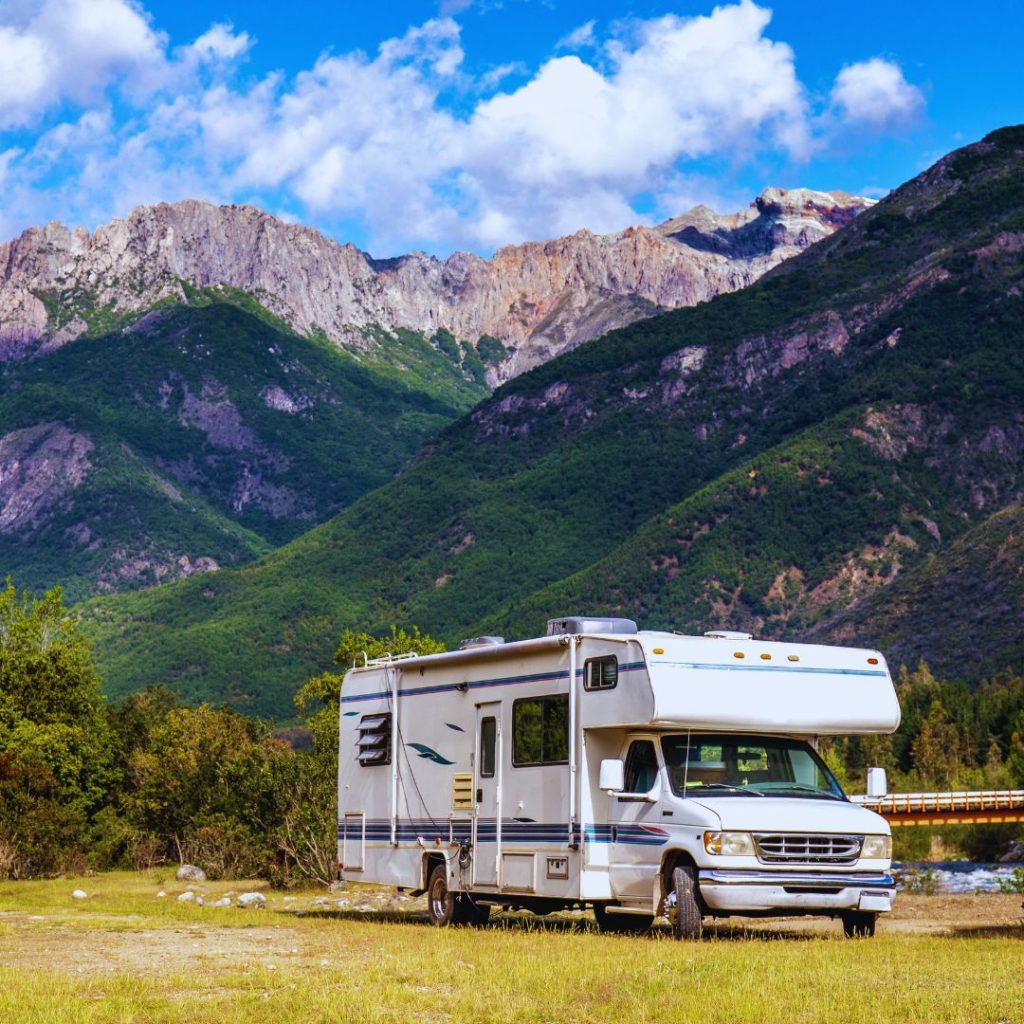
1. Yellowstone National Park, Wyoming
Yellowstone is a bucket-list destination for RV travelers, offering diverse landscapes, wildlife, and a wide range of activities for the whole family. Known for its geothermal features, including the iconic Old Faithful, Yellowstone is full of natural wonders that will amaze your kids and provide plenty of opportunities for family bonding.
Why It’s Perfect for Families:
Yellowstone has several RV-friendly campgrounds with amenities like electrical hookups, water, and restrooms. You’ll be able to explore geysers, hot springs, and hiking trails, all while enjoying the comfort of your RV at night. Families can also spot wildlife like bison, elk, and even bears (from a safe distance). The park’s vastness means there’s something for everyone to enjoy, whether it’s fishing, hiking, or just relaxing by the campfire.
2. Acadia National Park, Maine
For families who love coastal beauty combined with mountain views, Acadia National Park in Maine is the perfect destination. With its rugged coastline, scenic drives, and accessible hiking trails, it’s a place where everyone can enjoy nature without feeling overwhelmed.
Why It’s Perfect for Families:
Acadia’s campgrounds are RV-friendly, and there are sites with full hookups as well as primitive camping options. The park offers a variety of activities such as cycling on the carriage roads, tidepooling at Bar Harbor, or enjoying the park’s many easy-to-moderate hikes with breathtaking views. With Acadia’s proximity to the charming town of Bar Harbor, families can also enjoy local shops, fresh seafood, and unique attractions.

3. The Great Smoky Mountains, Tennessee and North Carolina
Straddling the border of Tennessee and North Carolina, the Great Smoky Mountains National Park is one of the most visited national parks in the U.S., and for good reason. With its stunning mountain views, diverse wildlife, and ample family-friendly hiking options, it’s an ideal place to escape into nature.
Why It’s Perfect for Families:
The Great Smoky Mountains offers several campgrounds that can accommodate RVs, many with electric and water hookups. The park is home to beautiful hiking trails, ranging from easy walks to more challenging hikes for older kids. You can also explore Cades Cove, where you may spot wildlife like deer and black bears. Additionally, the nearby towns of Gatlinburg and Pigeon Forge offer family attractions like Dollywood and amusement parks, making it a perfect mix of outdoor adventure and entertainment.
4. Joshua Tree National Park, California
Joshua Tree National Park, located in Southern California, is a magical desert destination known for its otherworldly landscapes, giant boulders, and, of course, the iconic Joshua trees. This is a perfect destination for families who are looking to explore unique desert terrain while still having easy access to amenities.
Why It’s Perfect for Families:
The park has a number of campgrounds that accommodate RVs, including some with full hookups. Families can explore hiking trails, rock climbing areas, and star-gazing opportunities in the park. Kids will love seeing the park’s fascinating rock formations and unique desert flora. Don’t miss the Cholla Cactus Garden or a visit to the Barker Dam for a fun family adventure.

5. Grand Canyon National Park, Arizona
The Grand Canyon is a must-see for any traveler, and there’s no better way to experience it than with an RV. Known for its vast, breathtaking views, the Grand Canyon offers plenty of family-friendly activities that will keep everyone entertained.
Why It’s Perfect for Families:
Grand Canyon National Park has multiple campgrounds that can accommodate RVs, many with modern amenities like water and electric hookups. Families can enjoy a scenic drive along the canyon’s South Rim, visit the Yavapai Point for panoramic views, and take a ranger-led program to learn about the park’s history. Older kids might enjoy hiking down part of the South Kaibab Trail or taking a helicopter tour to see the canyon from above. Don’t forget to stop at the Grand Canyon Railway for a fun family outing.
6. Zion National Park, Utah
Zion National Park, with its towering sandstone cliffs, beautiful canyons, and rugged terrain, is another RV-friendly destination that’s perfect for families. Whether you’re looking for challenging hikes or more laid-back exploration, Zion offers something for everyone.
Why It’s Perfect for Families:
Zion’s South Campground offers RV-friendly sites, and the nearby Watchman Campground has sites with electrical hookups. Families can take part in easier hikes like the Riverside Walk or the Lower Emerald Pool Trail, or for more adventurous families, the Angels Landing hike offers breathtaking views (although it’s not for the faint of heart). Zion is also known for its stunning slot canyons, and there are plenty of opportunities to learn about the area’s geology and wildlife.
7. San Juan Islands, Washington
For families looking for a peaceful retreat in the Pacific Northwest, the San Juan Islands offer a combination of natural beauty, charming towns, and RV-friendly campgrounds. This island chain is perfect for families who enjoy water activities and laid-back exploration.
Why It’s Perfect for Families:
While the islands are typically accessed by ferry, there are campgrounds on Orcas Island and San Juan Island that accommodate RVs. Families can enjoy whale watching, kayaking, and exploring the quaint town of Friday Harbor. The islands are also home to a variety of parks and outdoor spaces, including Moran State Park on Orcas Island, which features beautiful hikes, lakes for fishing, and plenty of family-friendly activities.
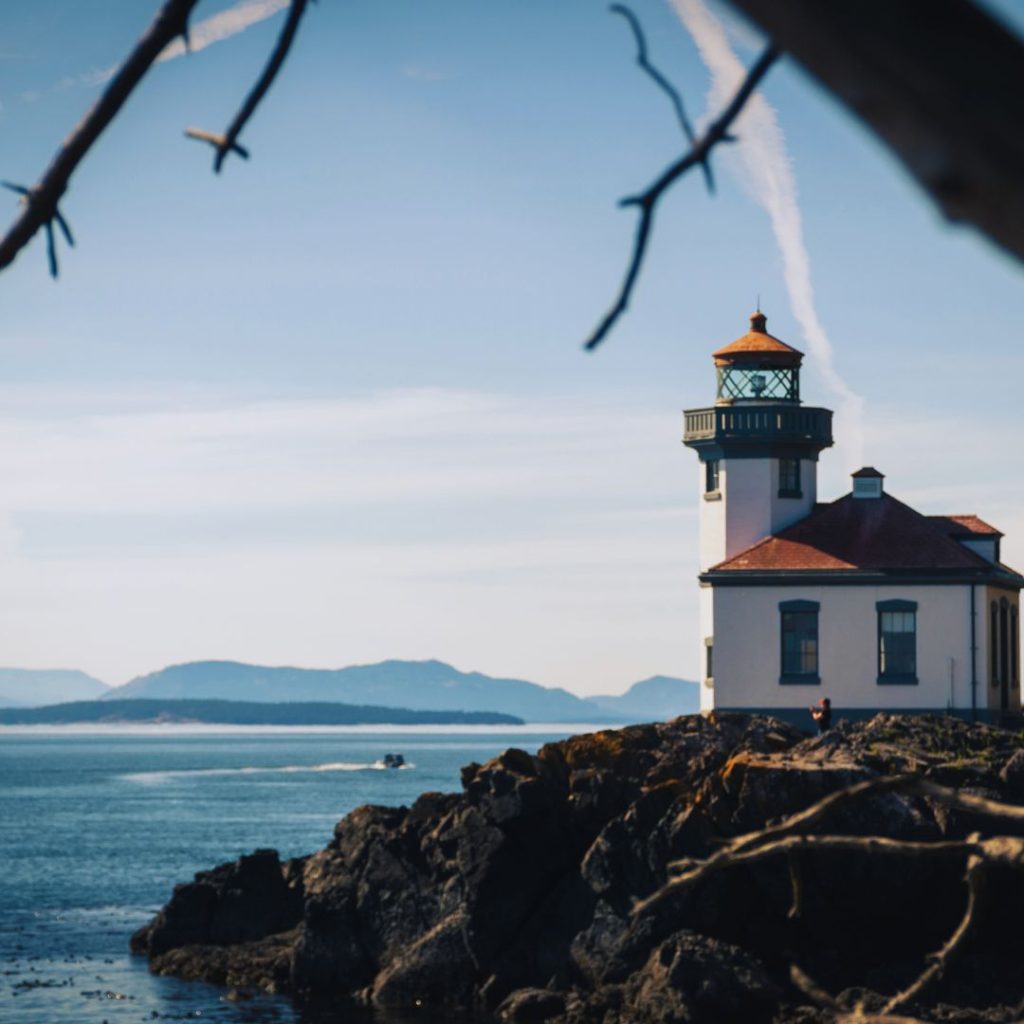
Start Planning Your RV Adventure
The perfect family road trip starts with choosing the right destination, and these RV-friendly spots offer everything you need for a memorable adventure. Whether your family enjoys hiking in the mountains, exploring desert landscapes, or relaxing by the coast, there’s an RV destination that’s just right for you. So pack up the RV, hit the road, and create lasting memories with your loved ones in some of the most beautiful places in the U.S.
How to Choose the Right RV for Your Family

Choosing the right RV for your family can make or break your road trip experience. With so many options available, it’s important to find an RV that fits your family’s needs, budget, and travel style. Whether you’re planning a weekend getaway or a cross-country adventure, the right RV will ensure comfort, convenience, and fun for everyone. Here’s a guide to help you select the best RV for your family.

1. Consider the Size of Your Family
The first thing to consider when choosing an RV is the size of your family. You’ll need enough space for everyone to sleep comfortably, store their belongings, and move around without feeling cramped.
How Many People Will Be Traveling?
Consider how many people will typically be in the RV. Most RVs are designed for either two people or a larger family, but it’s important to ensure there are enough beds and seating for everyone. Some RVs have bunk beds, convertible sofas, and dinettes that can be turned into sleeping spaces, while others may have designated sleeping areas for each family member.
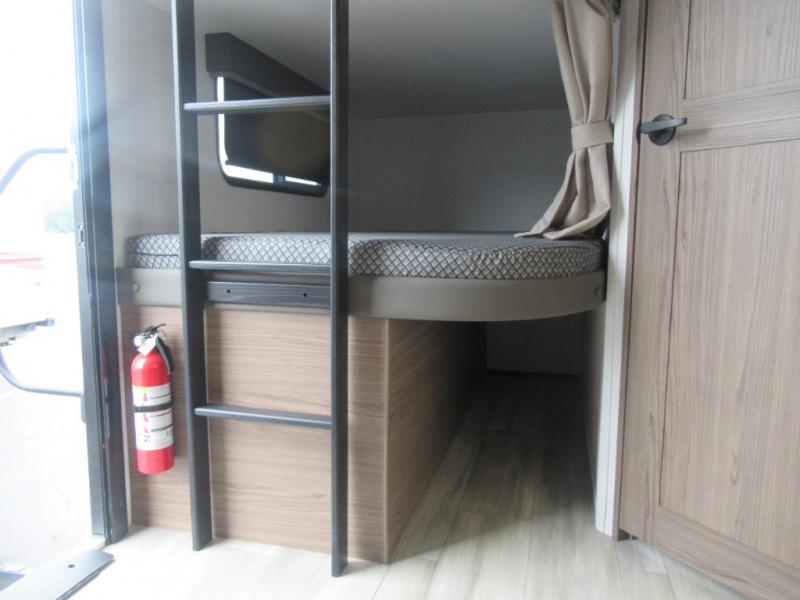
Room for Everyone:
Look for an RV with adequate space to allow for privacy and relaxation. A model with a separate master bedroom or a motorhome with a slide-out can make a big difference in comfort.
2. Type of RV: Motorhome vs. Towable
There are two main types of RVs: motorhomes and towable RVs. Each offers its own set of benefits, so you’ll need to choose the one that fits your family’s travel style.
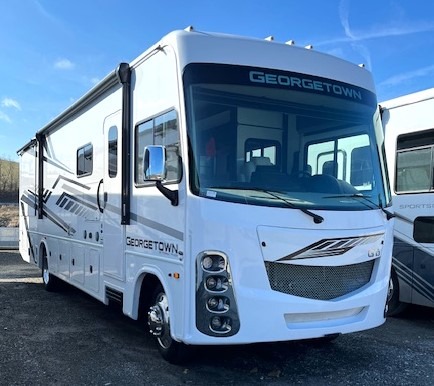
Motorhomes:
Motorhomes are all-in-one vehicles that combine both transportation and living space. These RVs are convenient for families who want to minimize the hassle of setting up camp or towing a trailer. They come in various sizes, from Class A (largest) to Class C (smaller and more compact). A motorhome can be ideal for families who want to quickly get on the road and enjoy the convenience of having everything in one vehicle.
Towable RVs (Travel Trailers and Fifth Wheels):
Towable RVs are hitched to your vehicle and can be detached when you arrive at your destination. If your family enjoys exploring with a separate vehicle once you’re set up, a towable RV could be a great choice. Trailers are easier to maneuver, and fifth-wheel RVs provide more space and luxury. However, towing a trailer requires a suitable vehicle with enough towing capacity.
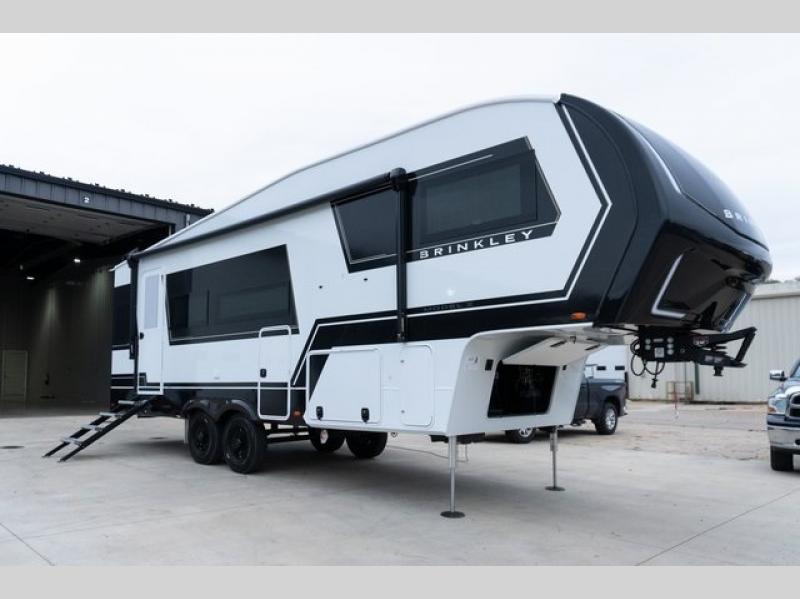
3. Sleeping Arrangements and Layout
Sleeping arrangements are one of the most important factors when choosing an RV for your family. You’ll want to make sure everyone has a comfortable place to sleep and that there’s enough room for everyone to rest after a long day of adventure.
Beds for Everyone:
Look for an RV with enough beds for each family member. Many family-friendly RVs offer bunk beds, fold-out sofas, or convertible dining areas. Some also have a master bedroom with a queen or king-size bed, and additional sleeping areas for kids or guests.
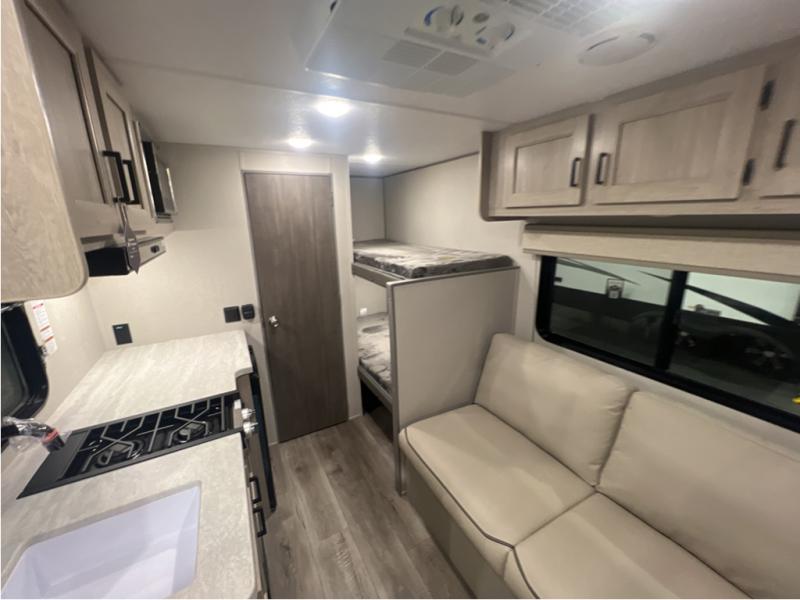
Layout Matters:
Consider the layout of the RV. Does it offer a good flow from the kitchen to the living area to the bathroom? Are there spaces where family members can relax or play games together? The best layouts maximize comfort while ensuring that the RV feels spacious, even when the whole family is inside.
4. Amenities and Features
The amenities you choose will greatly influence your family’s comfort during the trip. Depending on your family’s needs, look for RVs with features that make your travel experience smoother and more enjoyable.
Kitchen and Dining:
A well-equipped kitchen can save you money and make meal preparation easier, especially for families with dietary restrictions or picky eaters. Look for an RV with a full kitchen that includes a stove, microwave, refrigerator, and enough storage space for cooking utensils and supplies. Many RVs also have a dinette where the family can enjoy meals together.
Bathrooms:
Having a bathroom onboard is crucial for family comfort. Choose an RV with a bathroom that suits your family’s needs, whether it’s a full bath with a shower or a smaller half-bath. Some RVs even feature separate bathrooms for kids and adults.
Entertainment Options:
Long drives can get boring, especially for kids, so look for an RV with entertainment options like TVs, DVD players, and gaming systems. Many modern RVs have built-in entertainment systems that are perfect for keeping kids entertained during travel time.
5. Storage Space
Family trips often involve a lot of gear—clothes, camping equipment, toys, and other essentials. Ample storage space is a must when choosing the right RV.
Storage for Gear and Personal Items:
Look for an RV with plenty of cabinets, drawers, and closets for storing your family’s belongings. Many RVs also have exterior storage compartments that are perfect for larger items like bikes, camping chairs, or outdoor gear.
Organization:
Good storage not only provides space but also helps keep the RV organized. Consider adding extra organizational tools like bins or storage nets to maximize the space available.
6. Budget Considerations
The cost of an RV can vary greatly depending on its size, type, and features. It’s important to establish a budget before shopping to help you make the best decision for your family.
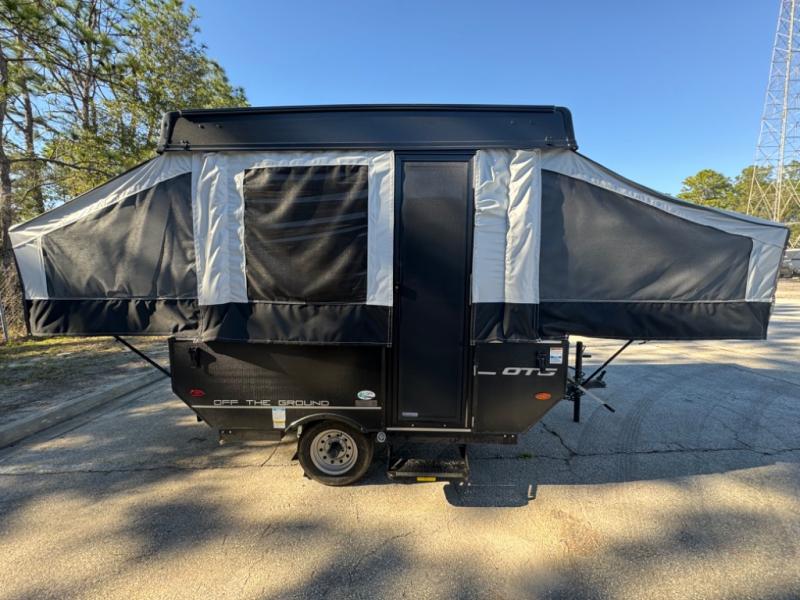
New vs. Used RVs:
New RVs come with all the latest features and warranties, but they can be expensive. Used RVs are a more affordable option, though they may require more maintenance. Consider your budget and whether you’d prefer a new, high-tech RV or a used model that still fits your family’s needs.
Operating Costs:
Don’t forget to factor in additional costs like insurance, fuel, campground fees, and maintenance. Make sure you have a realistic understanding of the ongoing expenses involved in owning and operating an RV.
Choose Wisely for Maximum Enjoyment
Choosing the right RV for your family is an important decision that will shape your travel experiences for years to come. By considering your family size, travel style, budget, and needs, you can select an RV that offers comfort, convenience, and fun. Whether you opt for a motorhome or a towable RV, prioritize features that will enhance your family’s comfort and enjoyment on the road. With the right RV, your family can make the most of every trip and create memories that last a lifetime.
The Benefits of RV Travel for Solo Travelers

Traveling alone can be an incredibly rewarding experience, allowing you to explore new places, meet new people, and gain valuable personal insights. For solo travelers, RVing provides a unique way to explore the world while maintaining independence and comfort. Whether you’re looking for a peaceful escape or an adventurous road trip, RV travel offers numerous benefits for those traveling solo.

1. Flexibility and Freedom
One of the most appealing aspects of RV travel is the freedom it offers. As a solo traveler, you have complete control over your schedule and itinerary.
No Set Plans:
With an RV, you’re not confined to rigid schedules or hotel bookings. Want to stay longer at a stunning national park or take an unexpected detour to a quirky roadside attraction? You can.
Explore at Your Own Pace:
Whether you prefer leisurely days of sightseeing or the thrill of spontaneous exploration, RV travel lets you go at your own pace. You can sleep in, take a midday nap, or spend an entire day hiking or relaxing, all without worrying about meeting anyone else’s timeline.
This flexibility is perfect for solo travelers who may not want to rush or feel pressured to follow a group’s agenda.
2. Comfort and Safety
Traveling alone can sometimes feel daunting, but an RV provides both comfort and security, making it an ideal option for solo adventurers.

A Home on Wheels:
When traveling in an RV, you have all the comforts of home at your disposal—your own bed, bathroom, kitchen, and living space. This comfort allows for a more relaxed journey, especially when you’re far from home or camping in more remote areas.
Personal Safety:
RVing offers an added layer of safety compared to traditional solo travel methods like backpacking or staying in hostels. With your RV, you always have a safe space to return to, and it’s easier to lock up your belongings while you’re away exploring. Plus, RV parks and campgrounds are typically secure environments, providing peace of mind for solo travelers.
3. Social Opportunities
Though RVing is often associated with solitude, it also offers plenty of opportunities to meet like-minded travelers and connect with others.
Community of RVers:
Campgrounds, RV parks, and even national parks are filled with other travelers, making it easy to meet people along the way. Many RV parks have communal spaces, where you can join group activities, share tips with fellow travelers, or even enjoy campfire chats.
Group Meetups and Events:
If you enjoy socializing, there are often RVing-related events and meetups organized for solo travelers. These events provide a great opportunity to connect with others, share stories, and learn from experienced RVers.
Solo travel doesn’t mean being alone all the time. An RV allows you to enjoy time to yourself, while still being part of a larger community when you desire.
4. Financial Flexibility
Traveling solo can often be expensive, especially when you factor in accommodations, meals, and transportation. However, RV travel offers significant cost savings.
Save on Accommodation:
With an RV, you eliminate the need for hotel rooms or hostels, which can quickly add up, especially in popular tourist areas. Campgrounds and RV parks are typically more affordable than hotels, with many offering basic amenities at a fraction of the cost.
Self-Catering:
RV kitchens are fully equipped, which means you can cook your own meals and avoid expensive restaurants. Solo travelers can save a lot of money by preparing simple, healthy meals in their RV. Plus, having your own kitchen gives you more control over your food preferences and dietary needs.
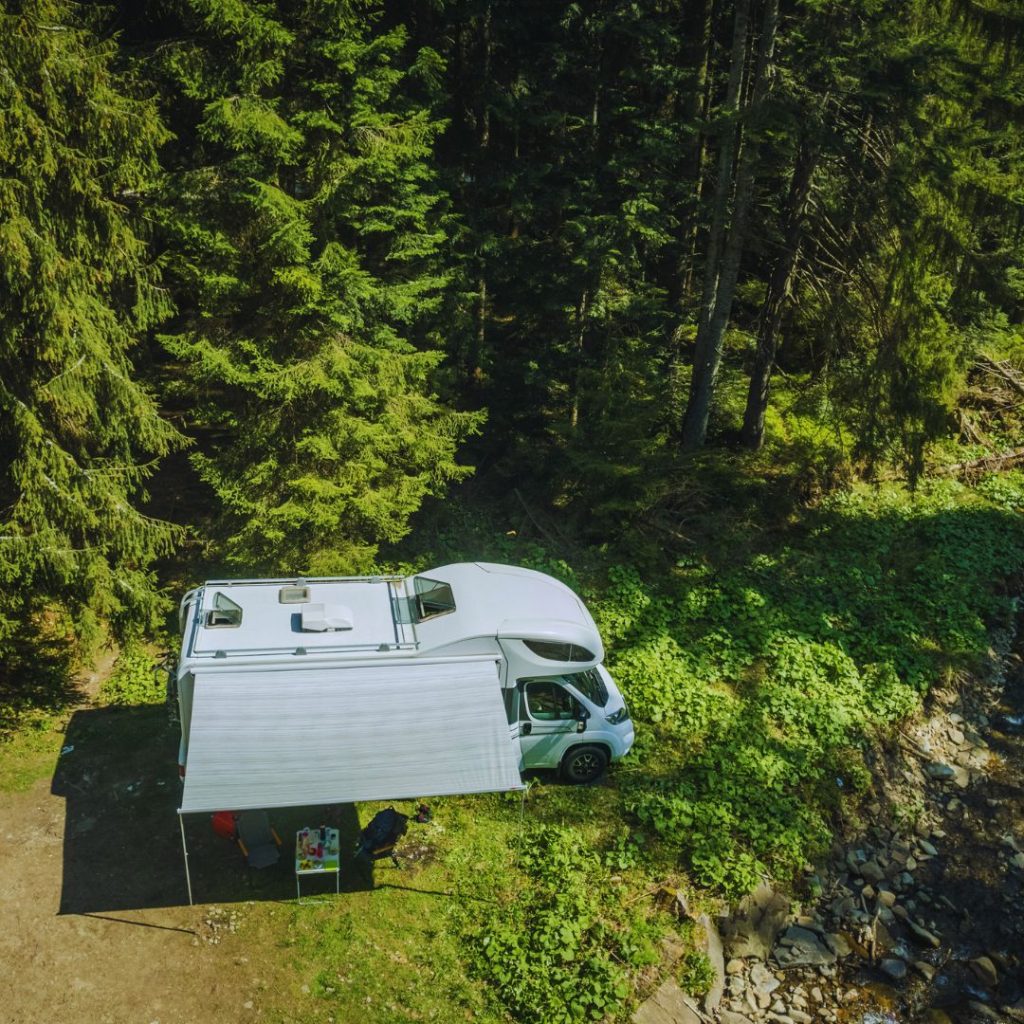
5. Embrace the Outdoors
For solo travelers who love nature and outdoor activities, RVing is an excellent way to experience the great outdoors in comfort and style.
Access to National Parks and Wilderness Areas:
RVs allow you to camp and explore national parks, forests, and other outdoor destinations with ease. Whether you’re hiking, fishing, or simply soaking in the scenery, an RV provides a convenient base camp for all your outdoor adventures.
Minimal Setup Required:
With an RV, there’s no need to spend time setting up tents or worrying about sleeping arrangements. Simply park your RV, step outside, and immerse yourself in nature. The ease of setup means you can focus more on exploring and enjoying the great outdoors.
6. Solo Travel with a Personal Touch
As a solo traveler, you often have to make adjustments to your travel style to accommodate your individual needs. RVing makes this process seamless.
Customize Your Experience:
From choosing your routes to deciding on which campsites to visit, RV travel lets you completely customize your experience. Want to spend a week by the beach? You can. Prefer the solitude of a forested campground? That’s entirely up to you. RVs offer a level of personalization that other forms of travel simply cannot.
Conclusion: Your Adventure Awaits
For solo travelers, RVing offers the perfect balance of freedom, comfort, safety, and adventure. Whether you’re looking to embark on a cross-country road trip or spend a weekend in a nearby national park, traveling by RV allows you to explore at your own pace while providing a home-like atmosphere on the road.
With so many opportunities for personal growth, social interaction, and outdoor exploration, RVing is an ideal choice for those traveling alone. Ready to begin your solo RV adventure? Hit the road and create unforgettable memories along the way.
Essential RV Gear Every Traveler Needs

Whether you’re a seasoned RVer or new to the world of RV travel, having the right gear is crucial to making your journey comfortable and stress-free. The beauty of RV travel is that you can bring almost everything you need with you, but ensuring you’re properly equipped with the essentials will make your adventures more enjoyable. Here’s a list of must-have RV gear every traveler should have.

1. RV Leveling Blocks
One of the first things you’ll need to do when you park your RV is to level it. A stable RV ensures comfort and safety, especially when you’re using the kitchen, bathroom, or sleeping.
Why You Need Them:
Uneven ground can cause your RV to sway, making cooking and sleeping less enjoyable. Leveling blocks help you achieve the perfect balance quickly.
Recommended Gear:
Look for adjustable blocks that stack easily, such as the Camco Heavy Duty Leveling Blocks. These are durable, stackable, and designed to support the weight of your RV.

2. RV Sewer Hose Kit
Managing waste in your RV is essential, and you’ll need a high-quality sewer hose kit to safely empty your tanks when you’re at a campsite with full hookups.
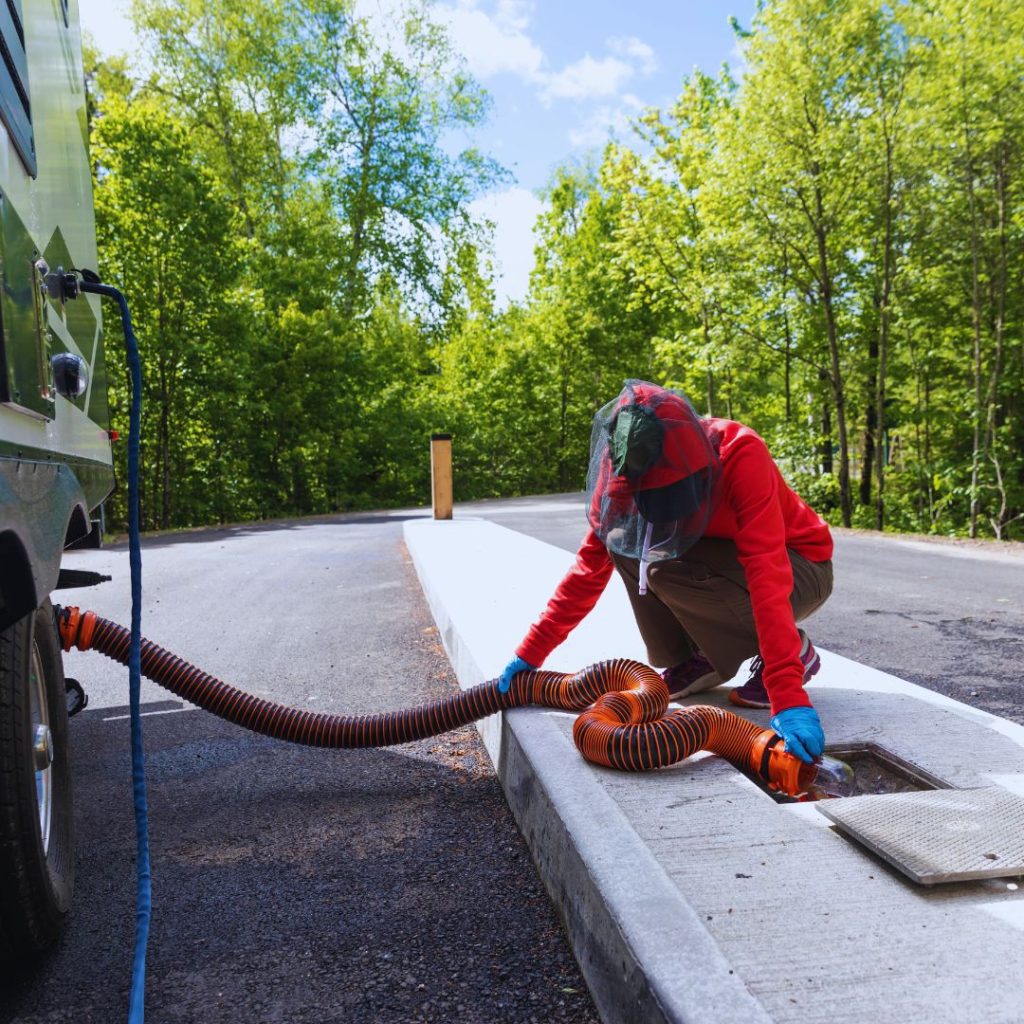
Why You Need It:
A well-made hose ensures that waste is disposed of safely and efficiently, and a poorly maintained or cheap hose can cause leaks or spills.
Recommended Gear:
The RhinoFLEX 15-Foot Sewer Hose Kit by Camco is highly rated for its durability, ease of use, and included swivel fittings. Make sure to also have a sewer hose support to ensure a steady slope for proper drainage.
3. Portable Power Station
Running out of power on the road can be a real hassle, especially when you’re off the grid or camping in remote locations. A portable power station allows you to keep your devices charged and your essentials running.
Why You Need It:
Many modern RVs come with built-in power systems, but having a backup portable power station can save you in emergencies, or when you’re boondocking without electrical hookups.
Recommended Gear:
Consider a Goal Zero Yeti 500X Portable Power Station. It provides enough juice to power small appliances, lights, and electronics for hours, and it can be recharged via solar panels for added convenience during longer stays in nature.
4. Outdoor Rug
Setting up an outdoor living space makes a big difference in your RV experience, and a quality outdoor rug can enhance your campsite.
Why You Need It:
An outdoor rug offers a place to sit, relax, and even eat outside while keeping dirt and debris from being tracked into your RV. It also creates a more welcoming and comfortable space for you and your family to enjoy nature.
Recommended Gear:
The RecPro RV Outdoor Patio Rug is a popular option, offering durability and easy cleaning. Choose one with drainage holes to prevent water from collecting underneath, keeping the area dry and comfortable.
5. Tire Pressure Monitoring System (TPMS)
Keeping an eye on your RV’s tire pressure is essential for safety and optimal performance. A tire blowout can ruin a trip, so having a monitoring system will give you peace of mind.

Why You Need It:
Proper tire pressure not only extends the life of your tires but also improves fuel efficiency and handling. A TPMS allows you to monitor tire pressure and temperature while you’re on the road, providing early warnings before a problem arises.
Recommended Gear:
The TST 507 Tire Pressure Monitoring System is an excellent choice, offering real-time monitoring for up to 10 tires, with both visual and audible alerts when there’s an issue.
6. Hitch Lock
If you’re towing a trailer or fifth wheel, a hitch lock is an important security feature to protect your RV and your belongings.
Why You Need It:
Hitch locks prevent theft by securely locking the hitch and deterring thieves from taking your trailer when you’re not around.
Recommended Gear:
Look for a Master Lock 2866DAT Trailer Hitch Lock. It’s made of durable, weather-resistant materials and provides a solid deterrent against theft.
7. Camping Chairs and Table
Comfortable outdoor seating and a functional table will improve your camping experience, allowing you to enjoy meals or relax by the fire.

Why You Need Them:
While your RV may be cozy inside, the outdoors is where you’ll spend a lot of your time. A comfortable chair and a table for meals or games add a layer of comfort to your campsite setup.
Recommended Gear:
The GCI Outdoor Freestyle Rocker is a favorite for RV campers, offering a comfortable chair with sturdy support. Pair it with a Coleman Camping Table, which provides a stable surface for cooking, eating, or playing games.
8. Solar Panels
Solar panels are a game-changer for RVers who want to stay off the grid. They allow you to generate your own electricity, reducing the need for external power sources and enhancing your camping experience.
Why You Need Them:
Solar power is eco-friendly and can provide enough electricity to power lights, appliances, and devices without needing to rely on campground hookups.
Recommended Gear:
The Renogy 200-Watt Solar Panel Kit is a solid choice, offering easy installation and efficient power generation for most RVs.
Conclusion: Be Prepared for Any Adventure
Having the right RV gear can transform your travels from good to great. With essential tools like leveling blocks, a reliable sewer hose, and a portable power station, you’ll be prepared for anything the road throws your way. Whether you’re just starting out or are a seasoned RV traveler, investing in quality gear ensures your adventures are as comfortable, safe, and enjoyable as possible.
Ready to hit the road? Make sure your RV is properly equipped with these essentials and start planning your next adventure today! Get an amazing RV today!
Why RVing Is Perfect for Family Vacations

Family vacations are about creating lasting memories, exploring new places, and spending quality time together. While traditional travel methods like flights or hotels have their perks, RVing offers a unique and flexible experience that’s perfect for families. Here’s why more families are hitting the road in RVs for their next big adventure.
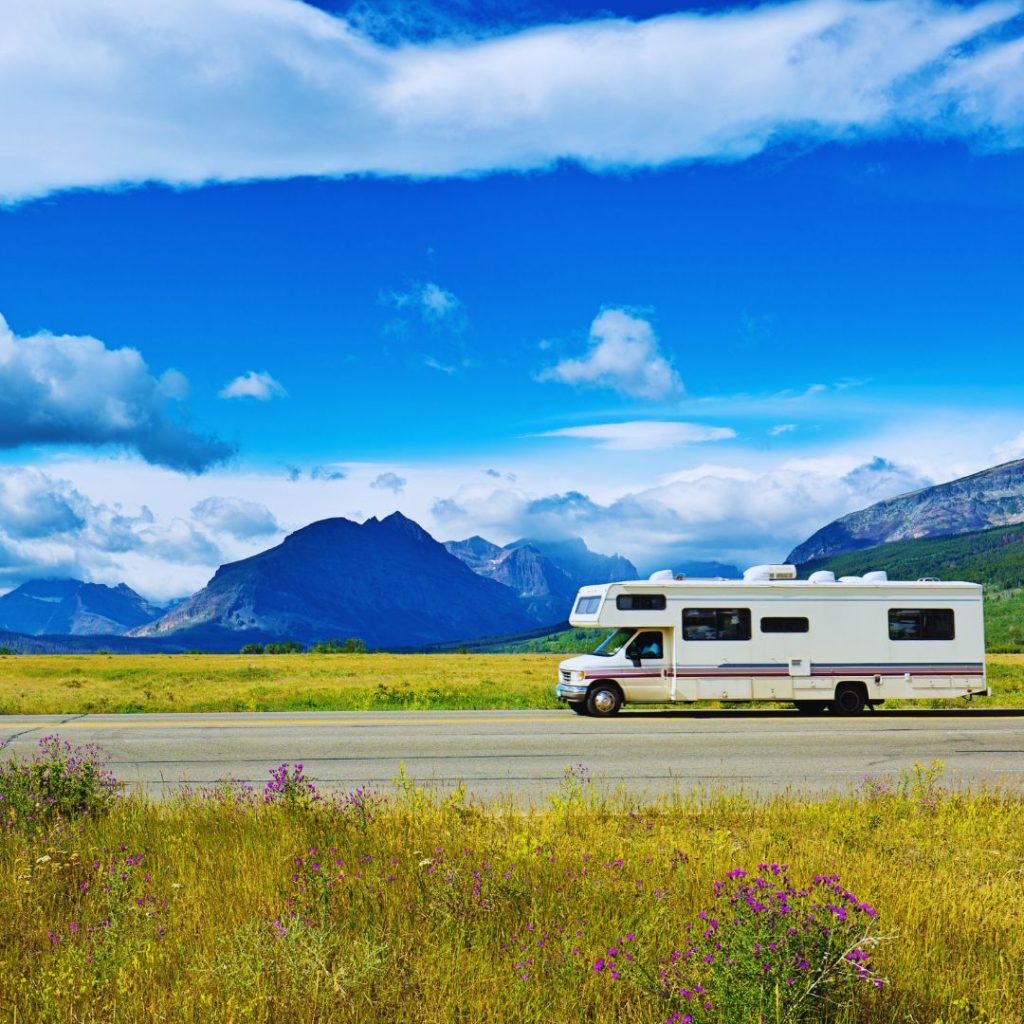
1. Freedom and Flexibility
RV travel offers unparalleled freedom to plan your trip your way.
Set Your Schedule: Unlike flights or cruises, you’re not tied to rigid timetables. Want to stay an extra day at the beach or make an impromptu stop at a roadside attraction? No problem.
Choose Your Destination: From national parks to theme parks, you can craft a vacation that suits your family’s interests. Whether you’re craving outdoor adventures or urban exploration, your RV can take you there.
This level of flexibility is ideal for families with kids, as it allows you to adapt to changing needs and interests.
2. Budget-Friendly Travel
Vacations can be expensive, but RVing offers significant savings compared to traditional travel.
No Expensive Flights or Hotels: Your RV is both your transportation and your accommodation. Campsite fees are typically much cheaper than hotel stays, and you can save even more by staying in free or low-cost boondocking locations.
Cook Your Own Meals: Eating out every day adds up quickly. With an RV kitchen, you can prepare healthy, affordable meals, which is especially helpful for families with picky eaters.
For larger families, the cost savings of RV travel can be substantial, making it a budget-friendly way to see the country.
3. Quality Family Time
One of the best aspects of RVing is the opportunity to reconnect with your loved ones.
Shared Experiences: From setting up camp to roasting marshmallows by the fire, RVing creates countless opportunities for bonding.
Disconnect from Screens: Many RV destinations, like national parks and remote campgrounds, encourage you to unplug and focus on spending time together. Hiking, fishing, or simply enjoying the scenery are great ways to create memories that will last a lifetime.
RV trips allow families to slow down and truly enjoy each other’s company in a way that other vacations often can’t.
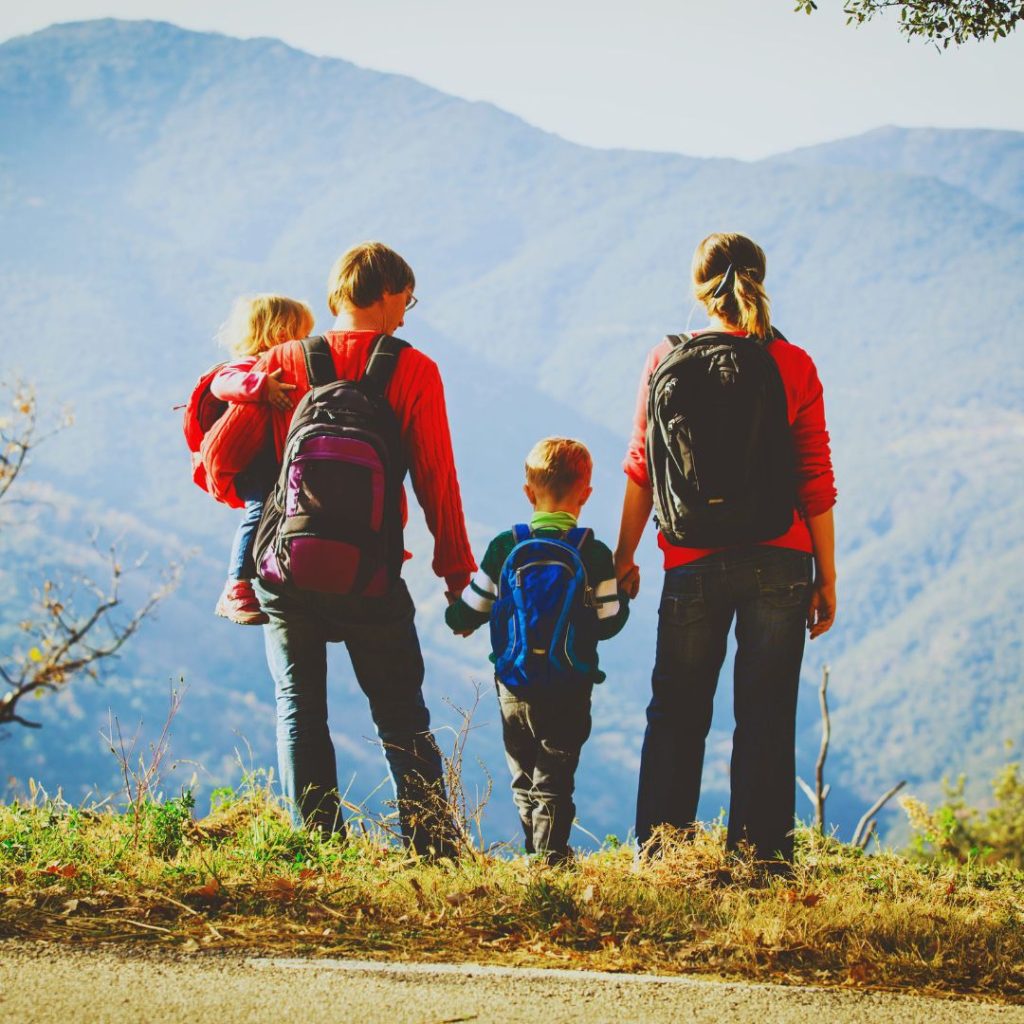
4. Adventure at Your Fingertips
RVs open the door to a world of adventure, especially for families who love the outdoors.
Explore National Parks: Visit iconic destinations like Yellowstone, Yosemite, or the Grand Canyon, where you can hike, bike, or enjoy ranger-led programs designed for kids.
Beach or Lake Getaways: With an RV, you can camp steps away from the water, perfect for swimming, kayaking, or simply relaxing in the sun.
Unique Attractions: From quirky roadside stops to family-friendly amusement parks, RVing allows you to explore off-the-beaten-path destinations that create one-of-a-kind memories.
Your RV serves as a home base, making it easy to transition from one adventure to the next without the hassle of packing and unpacking.
5. Comfort and Convenience
Traveling with kids often means packing a lot of gear, and RVs make it easy to bring everything you need for a comfortable trip.
Plenty of Storage: From bikes to board games, RVs provide ample space for all your family’s essentials.
A Home Away from Home: With your own beds, bathroom, and kitchen, RV travel eliminates the stress of hotel check-ins or finding kid-friendly restaurants. Plus, having a familiar environment can help younger kids feel more secure while on the road.
The convenience of RVing makes it especially appealing for families with young children or those who prefer a more relaxed pace of travel.

Tips for a Successful Family RV Trip
To make the most of your family RV vacation, keep these tips in mind:
- Plan Ahead: Reserve campsites early, especially during peak seasons.
- Involve the Kids: Let them help plan activities or choose destinations to keep them engaged.
- Pack Smart: Bring games, books, and outdoor gear to keep everyone entertained.
- Stay Flexible: Embrace the unexpected—it’s part of the adventure!
Conclusion: Make Your Next Vacation an RV Adventure
RVing is more than just a mode of travel; it’s a lifestyle that fosters connection, exploration, and fun for the whole family. With the freedom to choose your destinations, control your budget, and enjoy quality time together, RVing is an ideal way to create unforgettable family memories.
Ready to hit the road? Start planning your next family RV adventure today and discover why so many families are choosing RV travel for their vacations. Get an amazing RV today!
Top 5 Tips for Maintaining Your RV

Owning an RV comes with the freedom to explore the open road, but it also requires regular maintenance to keep it running smoothly and safely. Neglecting maintenance can lead to costly repairs and cut short your adventures. Whether you’re a seasoned RVer or a first-time owner, these five essential tips will help you maintain your RV and enjoy worry-free travels.
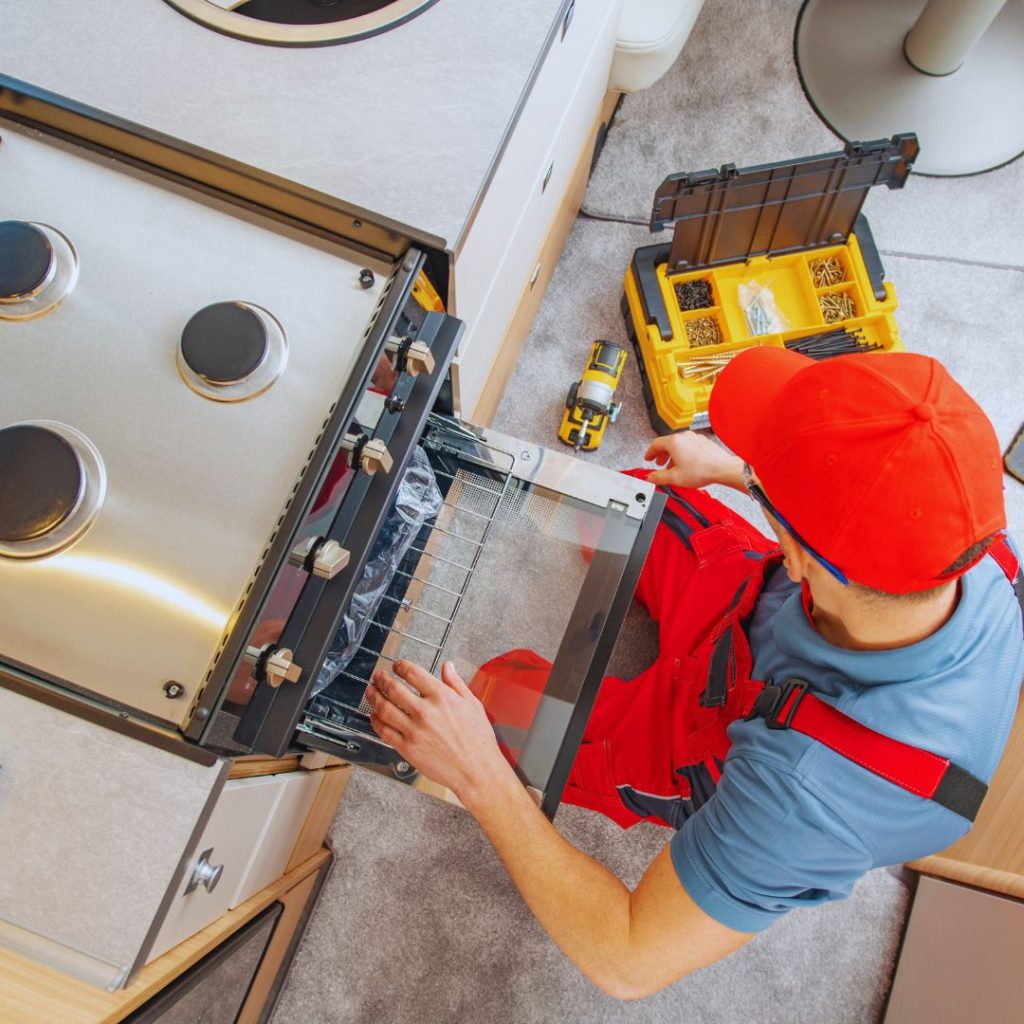
1. Inspect Your RV Regularly
Routine inspections are key to identifying and addressing potential problems before they become serious.
What to Check:
- Exterior: Look for cracks, dents, or leaks in the roof, seams, and windows.
- Tires: Check tire pressure and inspect for wear and tear before every trip.
- Interior: Test appliances, lights, and outlets, and inspect for signs of water damage or mold.
Regularly inspecting your RV ensures that you catch issues early, preventing costly repairs down the road.
2. Keep Up with Roof Maintenance
Your RV’s roof is its first line of defense against the elements, so keeping it in good condition is crucial.
Maintenance Tips:
- Clean the roof regularly to remove debris, dirt, and tree sap.
- Inspect the seals and seams for cracks or deterioration. Use sealant as needed to prevent leaks.
- Consider applying a protective UV coating to extend the life of your roof material.
Neglecting roof maintenance can lead to leaks and water damage, which are expensive and time-consuming to fix.

3. Maintain Your RV’s Plumbing System
Your RV’s plumbing system is vital for comfort on the road, so proper care is essential.
Key Steps:
- Use RV-friendly toilet paper to prevent clogs.
- Regularly empty and clean your black and gray water tanks.
- Sanitize your freshwater tank every few months to ensure clean drinking water.
Plumbing issues can be some of the most unpleasant to deal with, so proactive maintenance is a must.
4. Take Care of the Engine and Chassis
For motorized RVs, the engine and chassis are the heart of your vehicle. Regular maintenance will keep your RV running reliably.
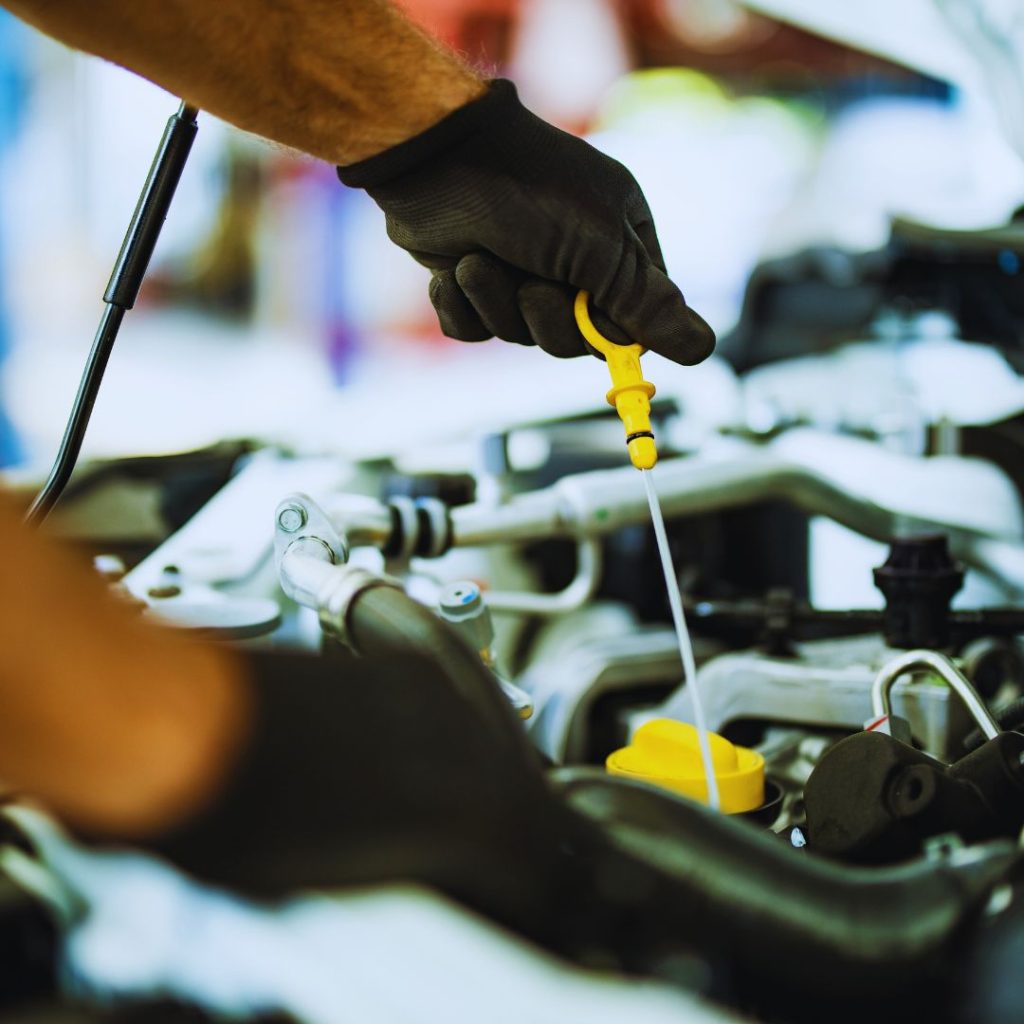
What to Do:
- Change the oil and replace filters according to the manufacturer’s recommendations.
- Check fluid levels (coolant, brake fluid, and transmission fluid) regularly.
- Inspect the battery and ensure the connections are clean and secure.
- Schedule annual maintenance with a qualified mechanic to address more complex issues.
Neglecting engine care can leave you stranded in the middle of your journey, so don’t skip these critical steps.
5. Protect Your RV When Not in Use
Proper storage is just as important as on-the-road maintenance. How you store your RV during off-seasons can impact its longevity.
Storage Tips:
- Cover Your RV: Use a high-quality RV cover to protect against sun damage, rain, and debris.
- Winterize Your RV: If storing your RV in colder months, drain the water system, add antifreeze, and seal any openings to prevent pests from getting inside.
- Tire Care: Use tire covers to protect against UV damage and consider moving the RV slightly every few months to prevent flat spots.
Protecting your RV during storage ensures it’s ready to go when the travel season begins again.
Bonus Tip: Create a Maintenance Schedule
Staying organized is key to keeping your RV in great shape. Create a maintenance schedule that outlines weekly, monthly, and seasonal tasks. This will help you stay on top of inspections, cleanings, and repairs.
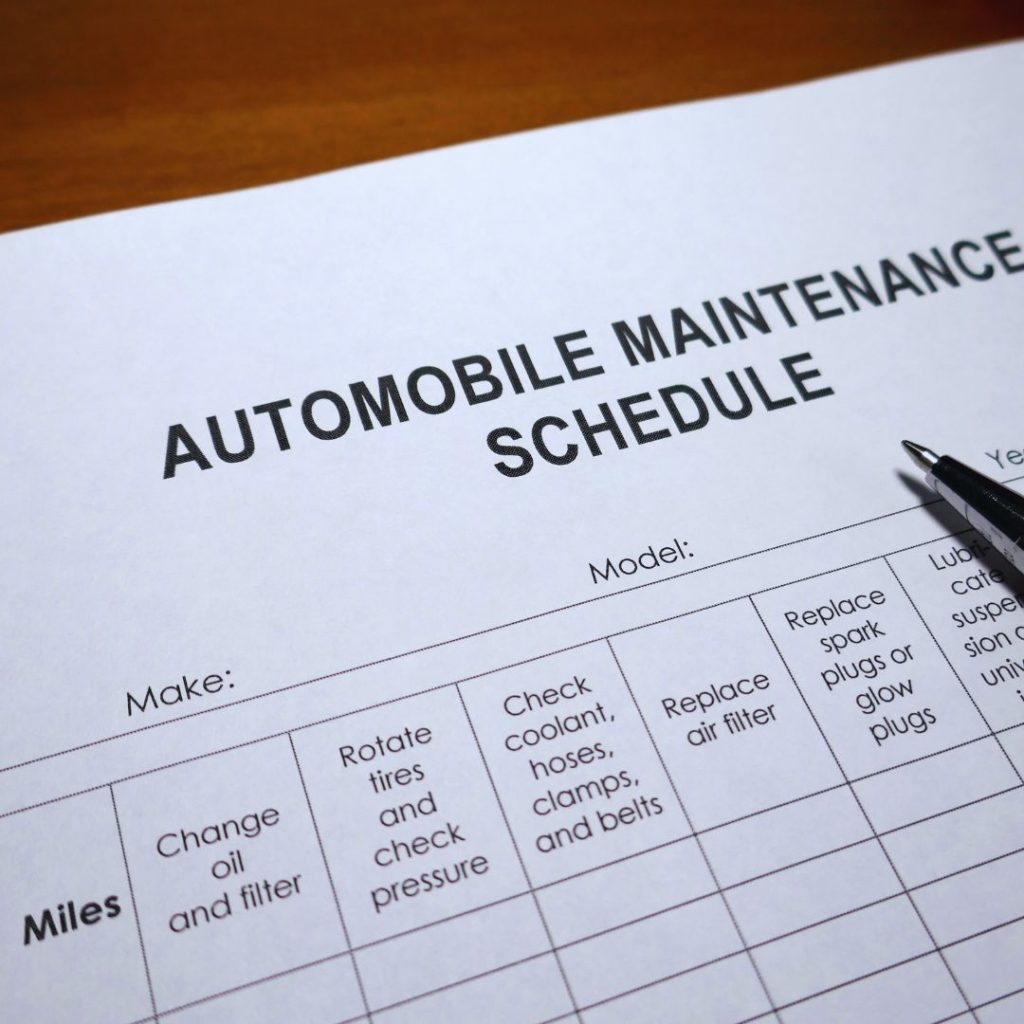
Why RV Maintenance Matters
Taking care of your RV isn’t just about avoiding breakdowns; it’s about preserving your investment and ensuring the safety of you and your passengers. With regular maintenance, your RV will remain reliable, efficient, and ready for your next adventure.
Conclusion: Hit the Road with Confidence
RV maintenance may seem overwhelming at first, but with these tips and a proactive mindset, it becomes manageable. By regularly inspecting your RV, maintaining the roof and plumbing, caring for the engine, and protecting it during storage, you’ll be set for years of exciting travels.
Ready to hit the road? Start by giving your RV a thorough inspection and creating a maintenance plan. A little effort today will save you time, money, and stress tomorrow. Safe travels!
